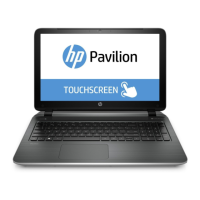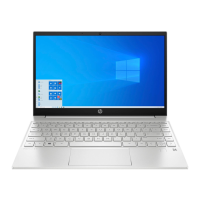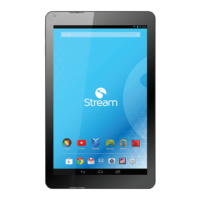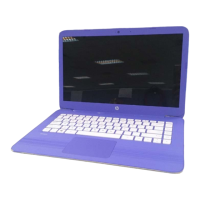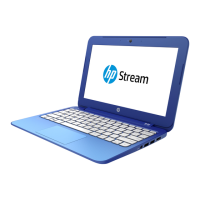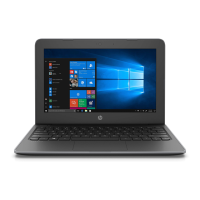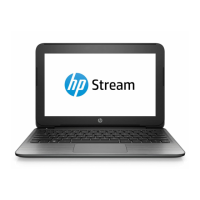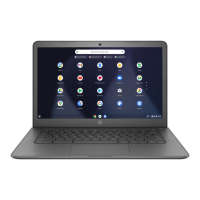
Do you have a question about the HP Stream PC 14-ax1 Series and is the answer not in the manual?
| Storage | 32 GB eMMC |
|---|---|
| Audio | Dual speakers |
| Processor | Intel Celeron N3060 (1.6 GHz base frequency, up to 2.48 GHz burst frequency, 2 MB cache, 2 cores) |
| Display | 14" diagonal HD SVA BrightView WLED-backlit (1366 x 768) |
| Graphics | Intel HD Graphics 400 |
| Wireless | Bluetooth 4.2 combo |
| Ports | 1 HDMI; 1 headphone/microphone combo; 1 USB 2.0; 1 USB 3.1 Gen 1; 1 multi-format SD media card reader |
| Battery | 41 Wh Li-ion |
Details components located on the right side of the computer.
Details components located on the left side of the computer.
Describes the computer's display components and features.
Covers the keyboard, touchpad, and its control zones.
Explains the function of indicator lights on the computer.
Describes the power button function and usage.
Identifies and explains the function of special keys.
Details the functions performed by action keys.
Describes bottom components and computer labels.
Lists and illustrates the main internal computer components.
Details the parts included in the rubber kit.
Lists and illustrates components of the display assembly.
Lists various other spare parts for the computer.
Lists the necessary tools for component removal and replacement.
Provides important notes for disassembly and assembly, including plastic and cable handling.
Explains ESD risks and precautions for electronic components.
Guidelines for safely packaging and transporting equipment.
Recommendations for setting up a safe workstation.
Describes grounding equipment and procedures to prevent ESD.
Overview of procedures for replacing computer components.
Steps for removing and replacing the bottom cover.
Instructions for removing and replacing the battery.
Procedure for removing and replacing the memory module.
Steps for removing and replacing the WLAN module.
Instructions for removing and replacing the RTC battery.
Procedure for removing and replacing the heat sink.
Steps for removing and replacing the speakers.
Instructions for removing and replacing the system board.
Procedure for removing and replacing the TouchPad.
Steps for removing and replacing the display assembly.
Instructions for removing and replacing the power button board.
Procedure for removing and replacing the power connector cable.
Details on removing and replacing the keyboard/top cover.
How to access the BIOS setup utility.
Information on updating the BIOS.
Steps to find the current BIOS version.
Instructions for downloading BIOS updates.
Using Windows features for data backup and system recovery.
Guide to creating recovery media using HP tools.
Instructions for using the Cloud tool to create recovery media.
Overview of system recovery options.
Using Windows for system restoration, resetting, and refreshing.
Restoring the system using HP-specific tools.
Detailed steps for system recovery using HP Recovery Manager.
System recovery via the HP Recovery partition.
How to modify the boot order in BIOS.
Steps to remove the HP Recovery partition.
How to use the Windows-based hardware diagnostics tool.
Instructions for downloading the Windows diagnostics tool.
Guide to getting the newest version of the Windows diagnostics.
Downloading diagnostics using product identifiers.
Steps to install the downloaded diagnostics tool.
How to use the UEFI version of hardware diagnostics.
Steps to launch the UEFI diagnostics.
Guide to creating a bootable USB for UEFI diagnostics.
Getting the newest UEFI diagnostics.
Downloading UEFI diagnostics using product details.
Configuring remote diagnostics via UEFI.
Obtaining remote diagnostics software.
Getting the newest remote UEFI diagnostics.
Downloading remote UEFI diagnostics via product name.
Personalizing remote diagnostic settings.
General specifications for the computer.
Detailed specifications for the HD display.
General requirements for power cord sets globally.
Country-specific power cord requirements and certifications.

